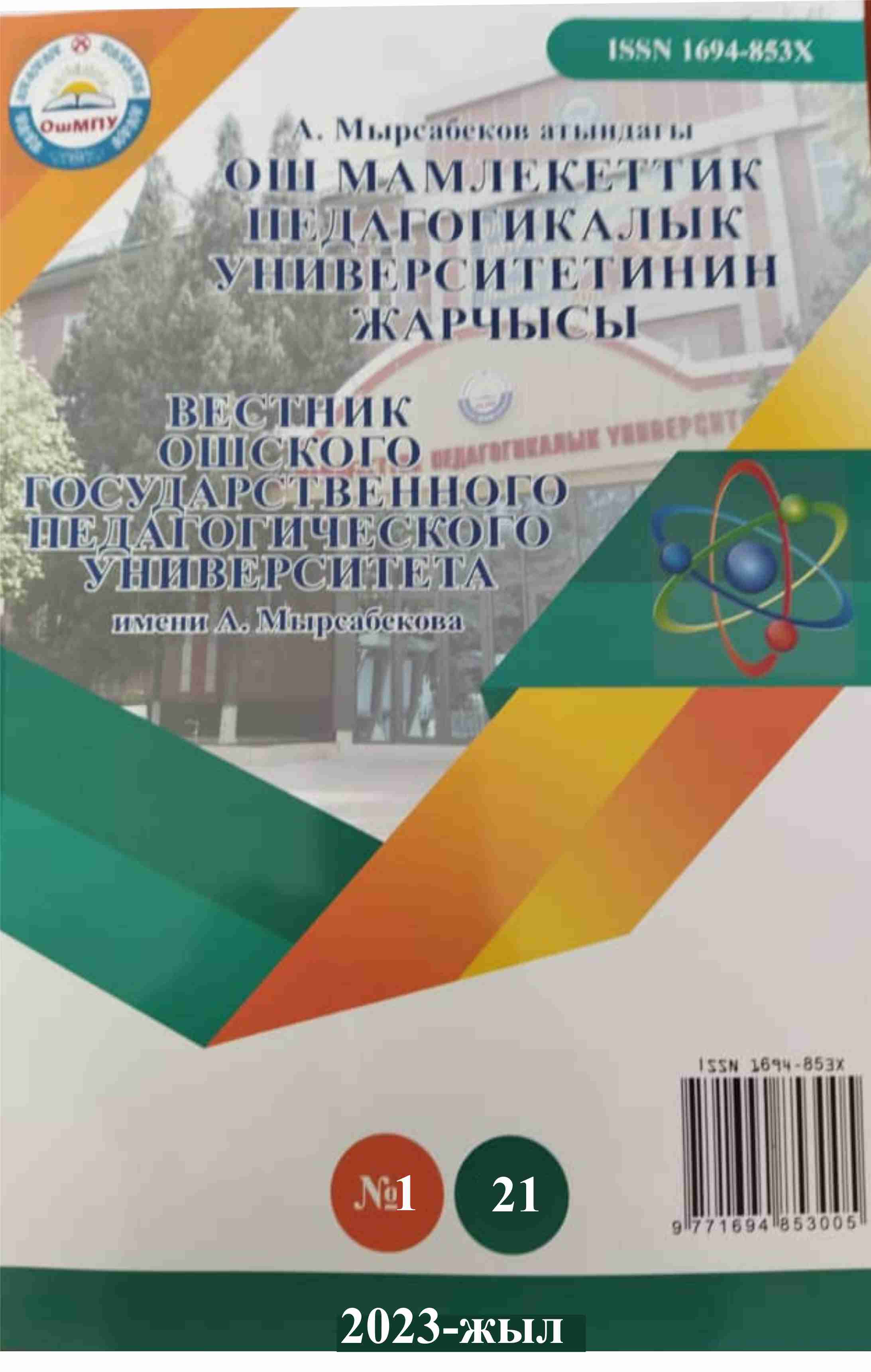DIRECTIONS FOR THE DEVELOPMENT OF DOMESTIC TOURISM IN THE OSH REGION
DOI:
https://doi.org/10.56122/..v1i1.59Keywords:
domestic tourism, holy places, travel, pilgrimage, natural conditionsAbstract
Among the countries of Central Asia, Kyrgyzstan stands out for its natural features, convenient geographical location and multinational culture. All regions of Kyrgyzstan have their natural advantages. The territory of the Osh region is also known for its unique nature. The article gives a general description of recreation areas, recreational areas and facilities located in the Osh region. The microclimate and natural conditions of the mountainous and flat terrain of the region are also taken into account. When researching the topic, the author worked on the basis of a predetermined plan. The information is taken from the relevant scientific literature and references are given. The data collected in the article differ in that they have scientific and practical significance. The article fully complies with the requirements of scientific publications and is recommended for publication.
References
Куйчиев Асадулло Сулайманович, Абдылдаева Мээр.Ош областынын рекреациялык мүмкүнчүлүктөрү. “Магистранттардын илимий демилгелери”. ОшМПУ жарчысы, 2023.
Святые места Юга Кыргызстана:Природа,Манас, Ислам. Культурно исследовательский центр Айгине. Бишкек-2013.
Ахмадалиев Ю.И. Этноэкология. Фергана-2021.
Политклиника. https://www.youtube.com/channel/UCSvxLfdfXfLFsnxu8Y61HXg
Куйчиев А.С. Перспективы развития туризма в Кыргызстане. Архангайский педагогический университет. Монголия 2022 г.
Викисловарь.
Энциклопедия Ошской области. Фрунзе 1987г.
Published
How to Cite
Issue
Section
License
Copyright (c) 2023 Bulletin of the Osh State Pedagogical University named after A. Myrsabekova

This work is licensed under a Creative Commons Attribution 4.0 International License.
This work is licensed under the Creative Commons Attribution 4.0 International License. To view a copy of this license, visit http://creativecommons.org/licenses/by/4.0/ or send a letter to Creative Commons, PO Box 1866, Mountain View, CA 94042, USA.











